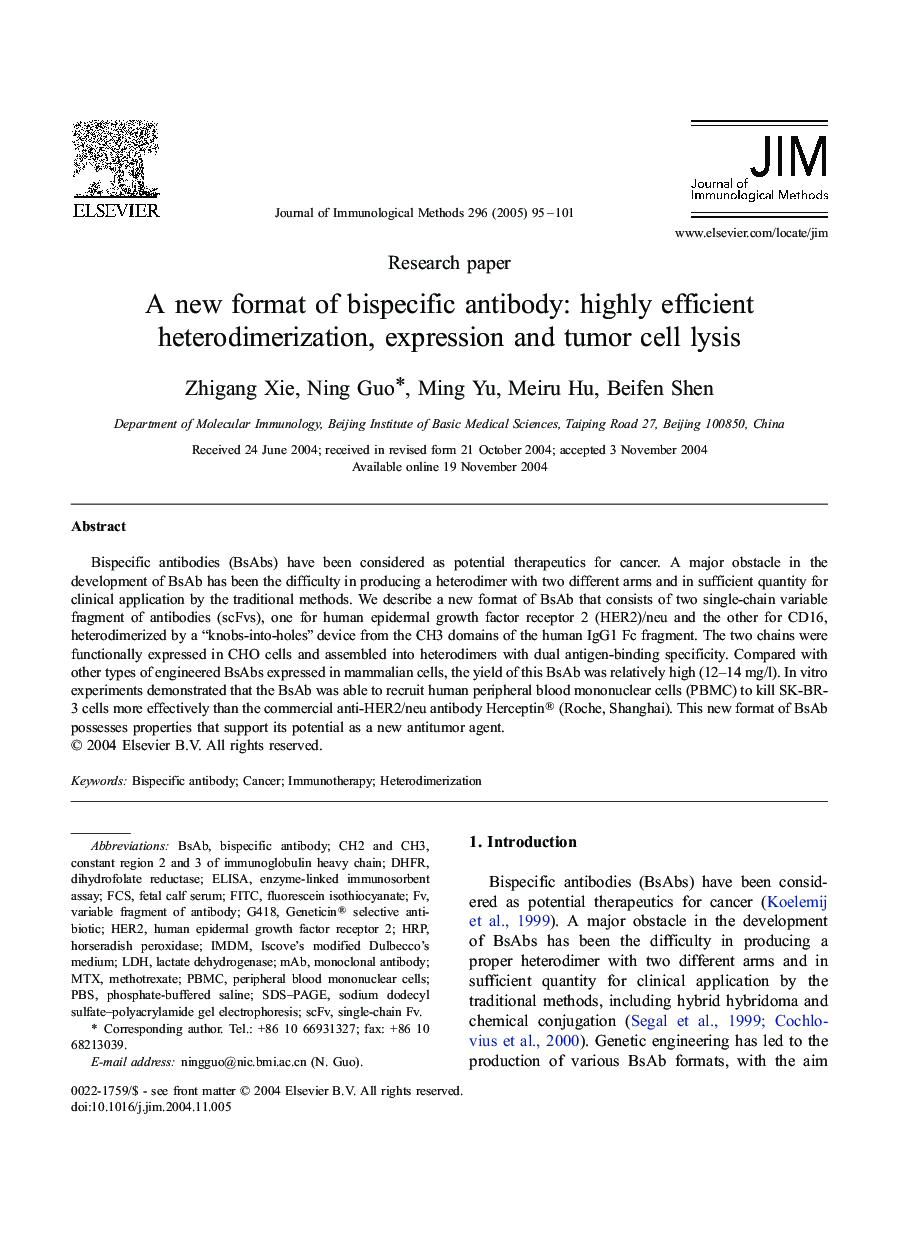| Article ID | Journal | Published Year | Pages | File Type |
|---|---|---|---|---|
| 9902402 | Journal of Immunological Methods | 2005 | 7 Pages |
Abstract
Bispecific antibodies (BsAbs) have been considered as potential therapeutics for cancer. A major obstacle in the development of BsAb has been the difficulty in producing a heterodimer with two different arms and in sufficient quantity for clinical application by the traditional methods. We describe a new format of BsAb that consists of two single-chain variable fragment of antibodies (scFvs), one for human epidermal growth factor receptor 2 (HER2)/neu and the other for CD16, heterodimerized by a “knobs-into-holes” device from the CH3 domains of the human IgG1 Fc fragment. The two chains were functionally expressed in CHO cells and assembled into heterodimers with dual antigen-binding specificity. Compared with other types of engineered BsAbs expressed in mammalian cells, the yield of this BsAb was relatively high (12-14 mg/l). In vitro experiments demonstrated that the BsAb was able to recruit human peripheral blood mononuclear cells (PBMC) to kill SK-BR-3 cells more effectively than the commercial anti-HER2/neu antibody Herceptin® (Roche, Shanghai). This new format of BsAb possesses properties that support its potential as a new antitumor agent.
Keywords
mAbscFvHRPFCSG418FITCMTXPBMCPBSHER2IMDMBsAbdhfrsingle-chain FvIscove's modified Dulbecco's mediumSDS–PAGEMonoclonal antibodybispecific antibodysodium dodecyl sulfate–polyacrylamide gel electrophoresisimmunotherapyELISAEnzyme-linked immunosorbent assaydihydrofolate reductaseCancerfetal calf serumperipheral blood mononuclear cellsfluorescein isothiocyanatelactate dehydrogenaseLDHMethotrexatePhosphate-buffered salineHeterodimerizationHorseradish peroxidaseHuman epidermal growth factor receptor 2
Related Topics
Life Sciences
Biochemistry, Genetics and Molecular Biology
Biotechnology
Authors
Zhigang Xie, Ning Guo, Ming Yu, Meiru Hu, Beifen Shen,
